
Cambodia‘s massive Angkor Archaeological Park deserves its rank at the top of many a world traveler’s bucket list. Located just outside of Siem Reap, the 250-square-mile sandstone complex was constructed between the ninth and 15th centuries by successive “god-kings” of the Khmer Empire. There are dozens of accessible temples and structures to see, but for most visitors, a 2-day or 3-day tour hits the highlights without becoming overwhelming.
At center stage is Angkor Wat, a masterpiece of Khmer architecture with a shimmering reflective pool at its feet and five lotus-shaped towers etching an imposing silhouette against the sky. Here is a list of what to do at Angkor Wat that you really shouldn’t miss:

An equally important measure of Angkor Wat’s fame lies in its detailed and extraordinary bas-relief friezes, mainly depicting episodes from Hindu epics and historical war scenes. The most famous of these is the Churning of the Ocean of Milk in the southern section of the east gallery. This brilliantly executed carving depicts 88 asuras on the left, and 92 devas, with crested helmets, churning up the sea to extract from it the elixir of immortality.
The demons hold the head of the serpent Vasuki and the gods hold its tail. At the center of the sea, Vasuki is coiled around Mt Mandala, which turns and churns up the water in the tug of war between the demons and the gods.

The remarkable western section of Angkor Wat’s south gallery depicts a triumphal battle march of Suryavarman II’s army. Suryavarman II is on an elephant, wearing the royal tiara and armed with a battle-axe; he is shaded by 15 parasols and fanned by legions of servants. Further on is a procession of well-armed soldiers and officers on horseback; among them are bold and warlike chiefs on elephants.
Just before the end of this panel is the rather disorderly Siamese mercenary army, with their long headdresses and ragged marching, at that time allied with the Khmers in their conflict with the Chams. The Khmer troops have square breastplates and are armed with spears; the Thais wear skirts and carry tridents.

The punishments and rewards of the 37 heavens and 32 hells are depicted in the eastern half of the south gallery. On the left, the upper and middle tiers show fine gentlemen and ladies proceeding towards Yama, the 18-armed judge of the dead, seated on a bull; below him are his assistants, Dharma and Sitragupta.
On the lower tier, devils drag the wicked along the road to hell. To Yama’s right, the tableau is divided into two parts by a horizontal line of garudas. The elect dwell in beautiful mansions, served by women and attendants; while the condemned suffer horrible tortures that might have inspired the Khmer Rouge.
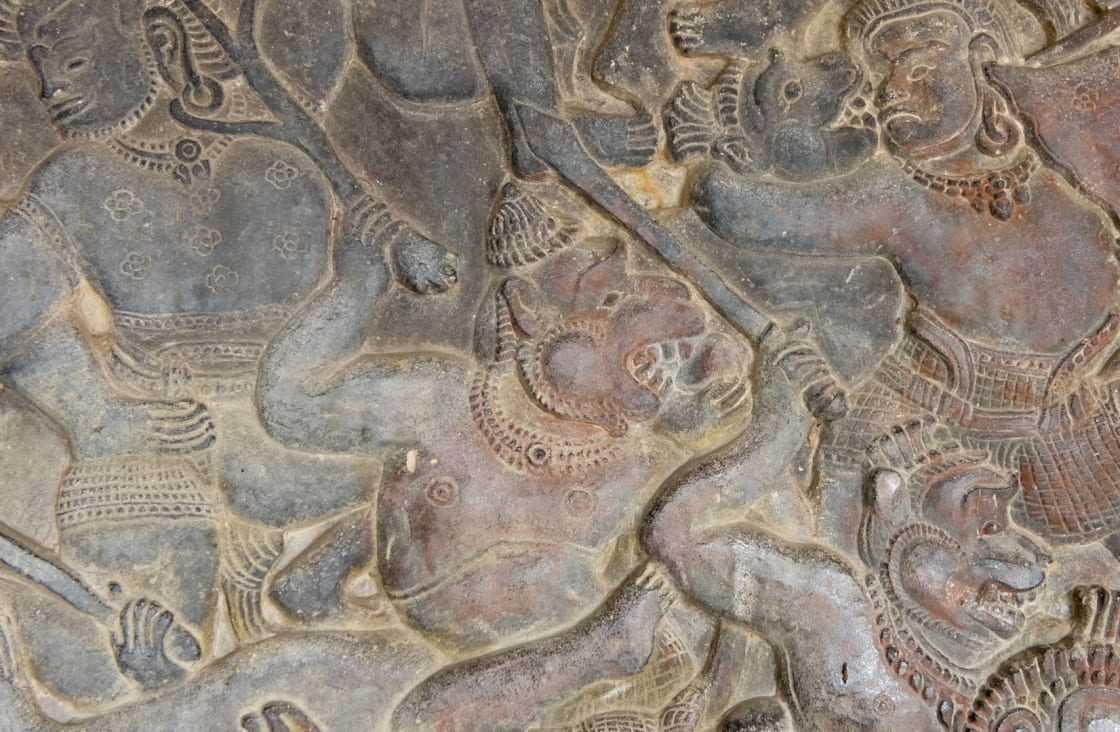
The northern section of the east gallery at Angkor Wat shows a furious and desperate encounter between Vishnu, riding on Garuda, and innumerable devils. Needless to say, he slays all comers.
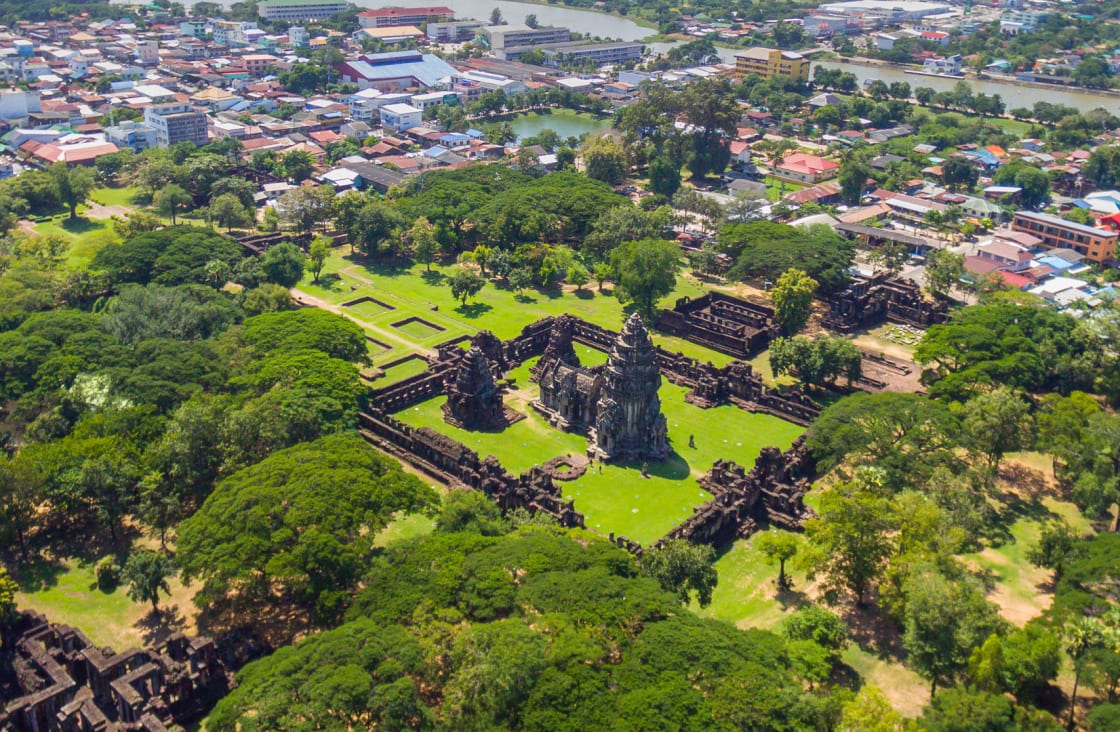
The spatial dimensions of Angkor Wat coincide with the links of the four ages of classical Hindu thought. Therefore, one of the mystical things to do at Angkor Wat is to walk from its outer causeway through the main entrance and courtyards to its highest tower. This is a symbolic journey to the beginning of the creation of the universe.
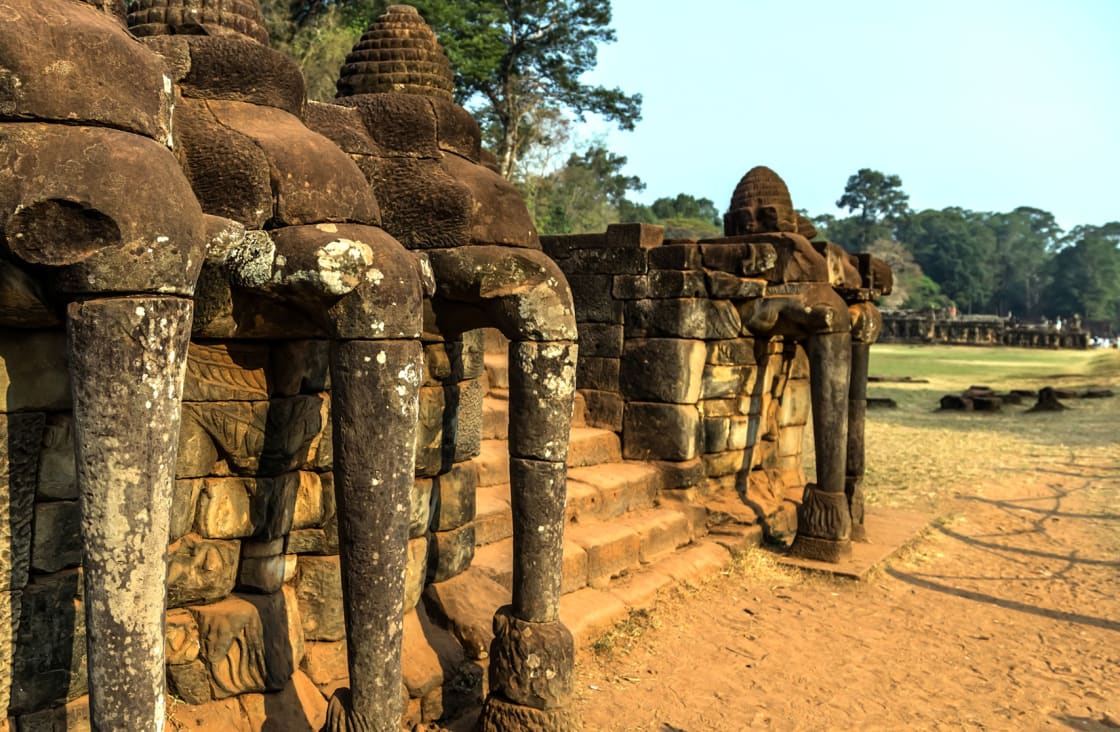
This gate at Angkor Wat, which has no stairway, was used by the king and others for mounting and dismounting elephants directly from the gallery.
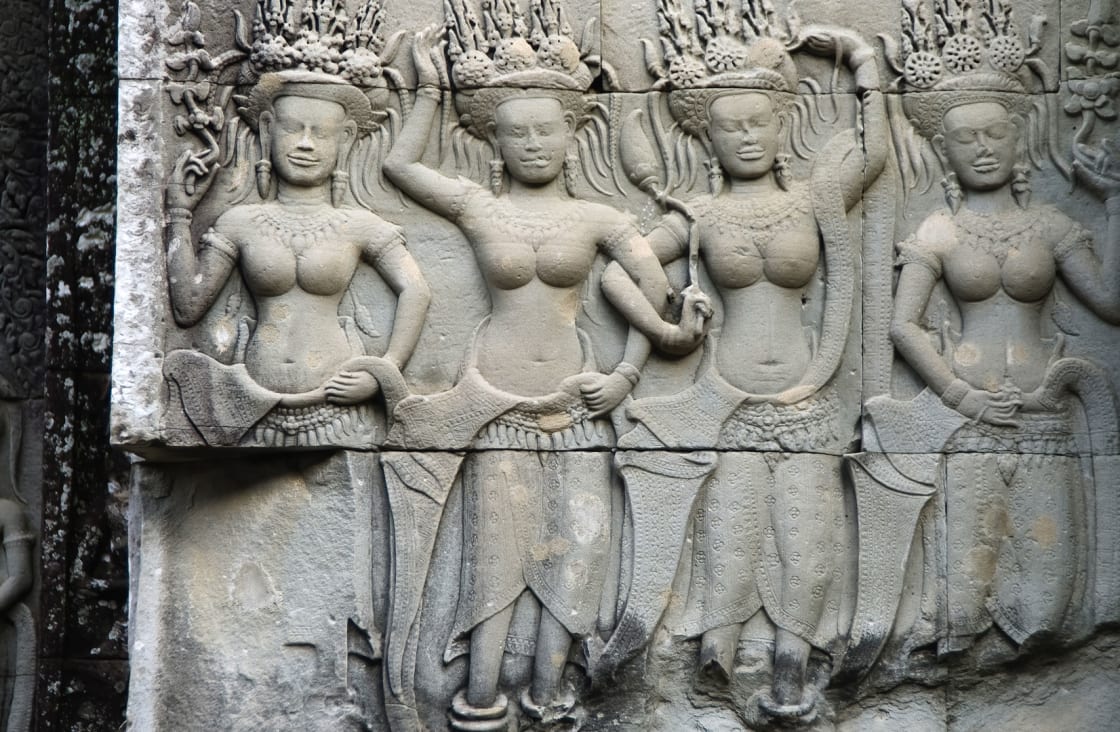
Angkor Wat is famous for having over 3000 enchanting apsaras − heavenly nymphs − carved into its doors and walls, each one unique. Thirty-seven different hairstyles are represented in total.

Make sure you visit the fortified city ruins of Angkor Thom, which is as famous as Angkor Wat. It was built a hundred years after Angkor Wat and is known as the last capital of the Angkor empire, surrounded by stone walls and canals.
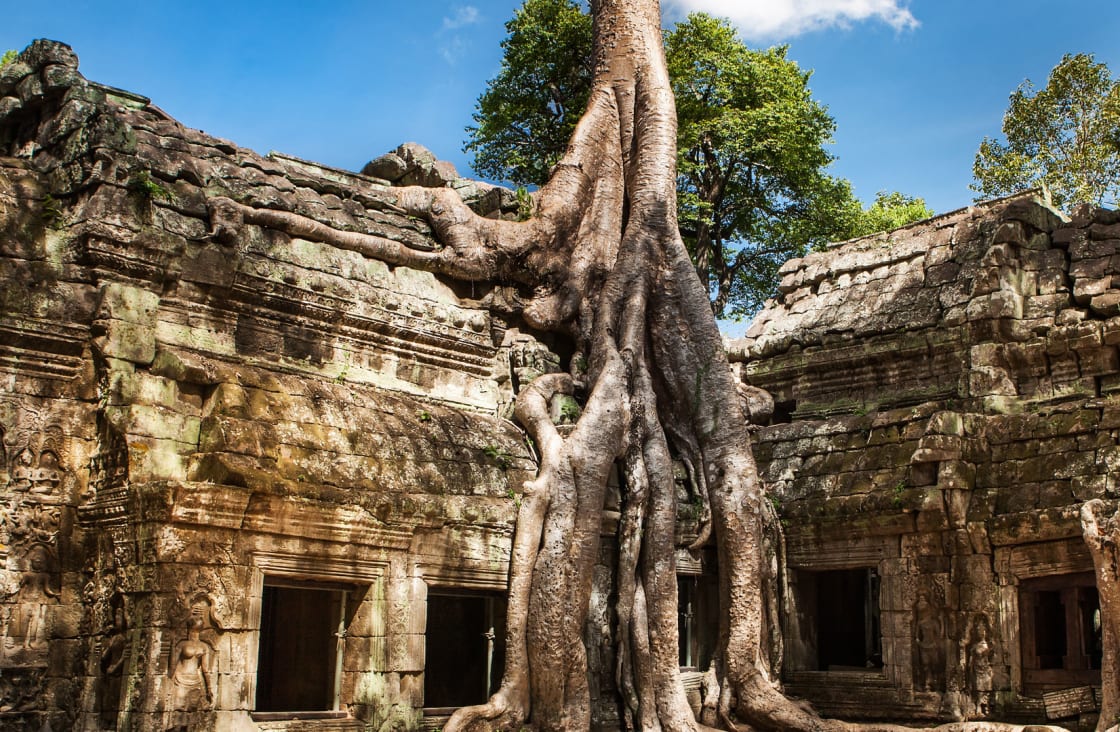
Stroll around Ta Prohm, where the roots of ancient strangler figs and kapok trees are reclaiming the site by growing into and out of the ruins. It is a mysterious, seductive vision of ancient architecture and nature intertwined. The main tree has become a symbol of love, it is said that couples will love each other forever if they take a photograph together underneath it.

Most visitors only come to Bakheng Hill for the view, with the temple’s different levels acting like tiered seating for those enjoying the sunset and, to a lesser extent, the sunrise. It’s quite a climb to get to the top, and the steps near the summit are very narrow. There is a road up the hill to a clearing short of the summit. Angkor Wat can be seen a short distance away in the jungle.
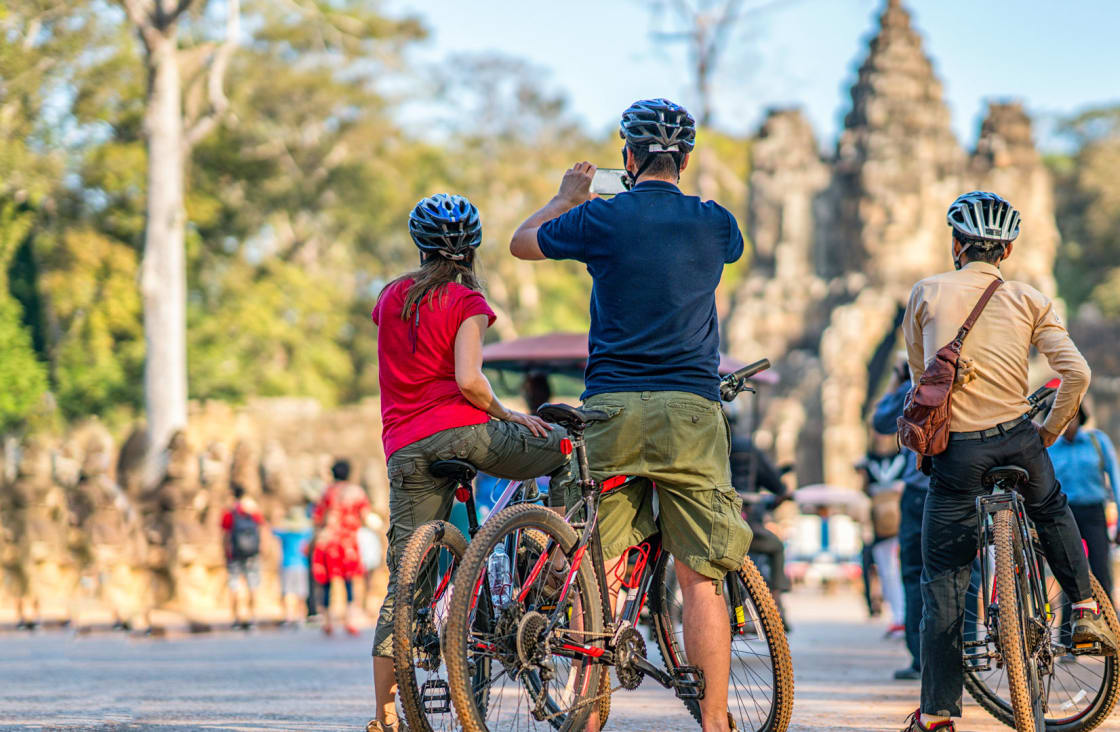
A guided cycling tour of the Archaeological Park of Angkor will give you a very special insight into the landscape, culture and history of Cambodia, and is an ideal way to embrace responsible tourism. With your bicycle, you will feel so close to the life of the people and the surroundings while cycling on the small dirt roads and jungle paths that bypass the main tourist routes.
Most organized tours will enable you to explore the major temples of Angkor including Angkor Thom, Bayon, and Ta Prohm − where the movie Tomb Raider was filmed, as well as various smaller temples depending upon your preferences. Lunch is usually included. If you choose the sunset option, you will continue to the pyramid of Pre Rup to watch what is usually a majestic view of a red sky with the sun going down in the picturesque environment of the temples and the rice fields of the East Baray.
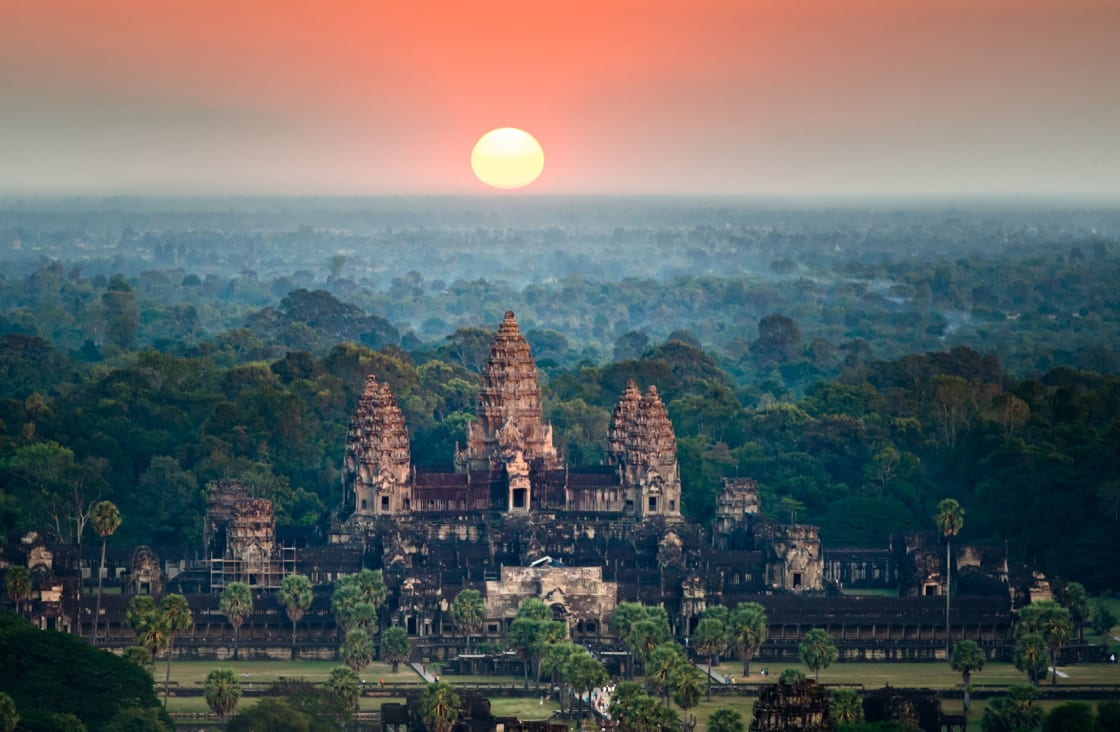
A helicopter ride is a magnificent way to see the grandeur of Angkor Wat and allows you to really appreciate the scale of the temple complex, which is not easy to comprehend from the ground. Naturally, you cannot land at each individual temple to walk around it, so this option is perhaps better combined with a land tour.
Most trips also take you over Tonle Sap Lake – which is also best seen from high up so that you can appreciate its size – making a helicopter journey a good way to get a general overview of Siem Reap’s star attractions.
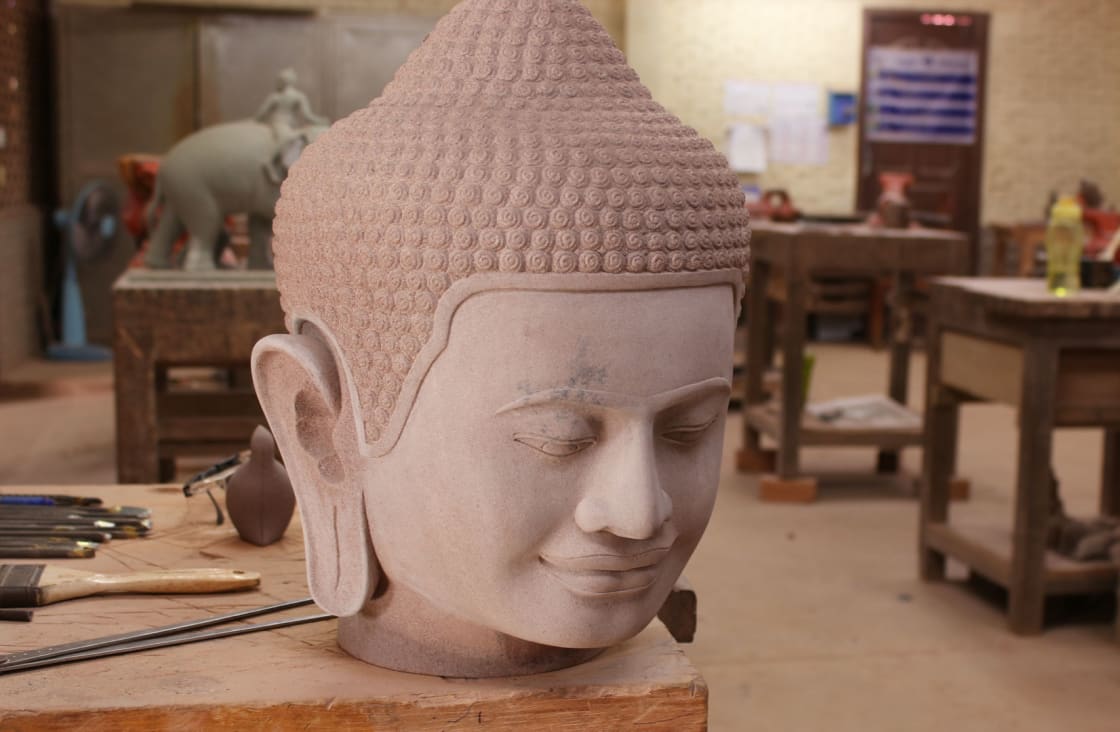
This is a small branch of the impressive Artisans Angkor initiative, which aims to revitalize the handicraft industry around Siem Reap and Angkor. Prices are high compared with local markets, but the shop is mercifully air-conditioned, and the quality of workmanship is impressive.

Get the local experience at Psar Chaa, the Old Market in Siem Reap’s city center. This dense, maze-like indoor market is crammed with stalls selling everything you could possibly imagine. Locals come here to shop for food and household items but there is also a large section where you can find clothes, shoes, jewelry and a lot more. If you’re hungry, head to the center of the market where you can find authentic Cambodian dishes.
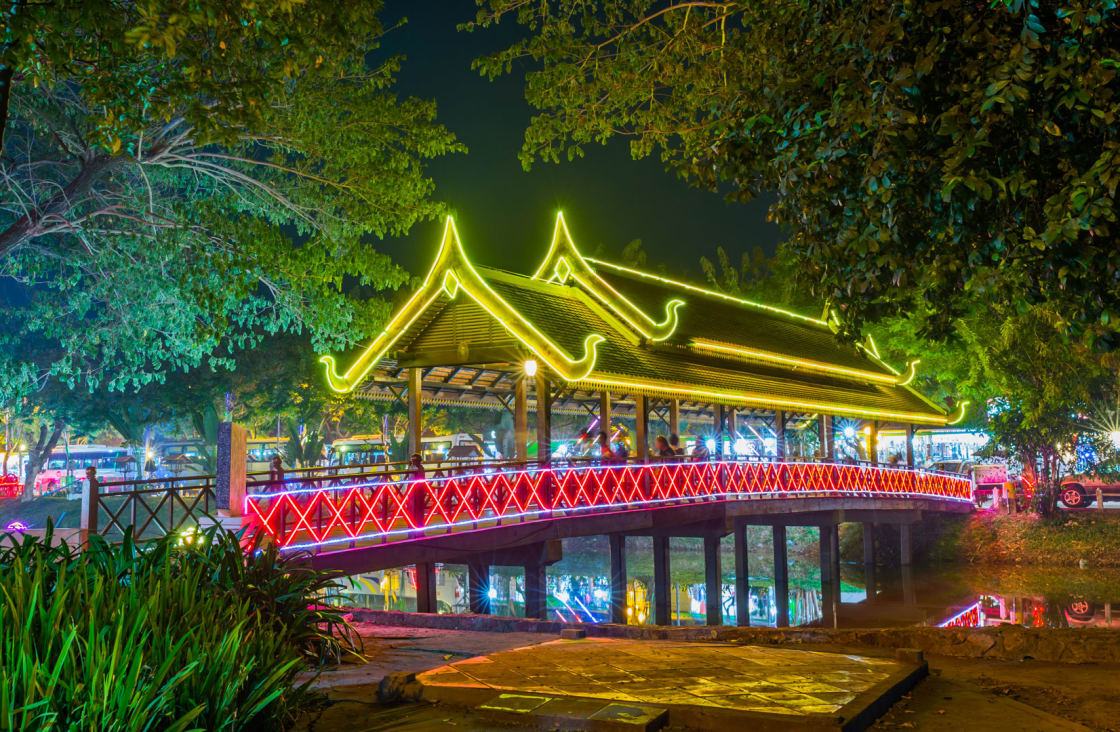
Siem Reap’s original night market near Sivatha Street has sprung countless copycats, but it remains the best and is well worth a browse. It is packed with stalls selling a variety of handicrafts, souvenirs, patterned silks and shimmering jewels. Island Bar offers regular live music and Sombai offers infused organic rice wines if you decide to make a night of it.
While Rainforest Cruises aim to provide accurate and up-to-date information, we make no representations as to the accuracy or completeness of any information herein or found by following any link on this site. Rainforest Cruises cannot and will not accept responsibility for any omissions or inaccuracies, or for any consequences arising therefrom, including any losses, injuries, or damages resulting from the display or use of this information.




